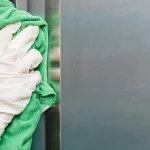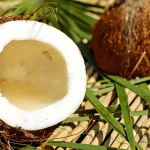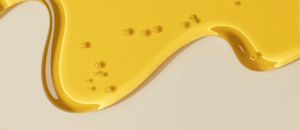We’re all familiar with the concept of biodegradability by now, and we’re used to being asked if an ingredient or product is biodegradable. But what does the term ‘biodegradability’ mean, and how is it tested?
Let’s start by looking at the terms used and then we’ll address some common biodegradability challenges we encounter when talking to customers. Please note that this is a simple overview.
Different Types of ‘Biodegradability’
Aerobic and Anaerobic Biodegradability
An aerobic environment is one with sufficient oxygen to promote biological activity. Anaerobic is the opposite, so environments with poor oxygen levels. Both have very different testing systems for assessing biodegradability.
For aerobic environments, biodegradability is measured by the change in ratio of BOD (biological oxygen demand) and COD (chemical oxygen demand).
For anaerobic environments, another parameter is used – ‘DOC’ (dissolved organic carbon) – and the test is performed in a closed container.
Primary Degradation
This term is concerned with loss of activity (in surfactant terms, that’s the loss of surface active properties). It does not mean that there’s any major degradation of the whole molecule. For example, primary degradation could refer to the removal of the head group on a high foaming anionic surfactant, which would render it non-foaming.
Ready Biodegradability
This is the main way that we discern if a product will be Ultimately Biodegradable, which means that it can be totally mineralised in the environment.
Ready Biodegradability is also the main criteria of the Detergent Regulation. It is measured by the OECD tests 301A to 301F. These tests are all slightly different and the percentage pass rates for each test vary, but the basic premise is the degrading of organic material by bacteria in an aerobic environment. The tests are 28 days long. The test starts when 10% of the matter is degraded and then the pass percentage must be reached before or on the 28th day.
Inherent Biodegradability
This is a simpler and easier test system than Ready Biodegradability and is used as a screening test to assess if a product is capable of being Ultimately Biodegradable. If it fails this test, it will not be considered degradable, which means there’s no need to go through the more costly Ready Biodegradability tests.
So, this test is quicker and cheaper, but it’s also only a guide. Test systems are (for example) OECD 302B and 302C. If a product shows over 20% degradation it can be considered to have Inherent Primary Biodegradability. If it shows over 70% degradation, then it is considered to have Inherent Ultimate Biodegradability.
Ultimate Biodegradability
Products that pass the Ready Biodegradability tests are considered to be Ultimately Biodegradable, which means that they are completely removed from the environment.
Depending on the material, other test systems can be used to establish biodegradability.
Anaerobic biodegradability is measured mainly by OECD 311, which is done with activated sludge in sealed containers and is measured by gas evolution.
Most products are degraded in aerobic environments like sewerage plants or indeed in the natural world. Yet anaerobic degradability is asked for and (in a lot of cases) is available for most surfactants used in detergents and cosmetics. It is not subject to regulation, however, in either cosmetics or detergents.
Biodegradability Challenges
Biodegradability and the Detergents Regulation
In the case of this Regulation a product has to be classified as a surfactant or a detergent, i.e. something which cleans (although fabric conditioners are specifically covered) and must pass as Readily Biodegradable by any of the standard test methods. Polymer additives such as polyacrylates, hydrotropes and chelating agents are not considered surfactants and are exempt from the regulation. A slightly grey area is describing a product as a wetting agent rather than as a detergent. This term is often applied to fluoro or silicone surfactants, which can be shown to not have detergent properties by standard criteria.
Note that the Detergent Regulation has no relevance to the Cosmetic Products Regulation.
Slow Degradation Speeds
Some (often natural) polymer products are not deemed to be Readily Biodegradable because the speed of degradation is too slow for the Ready Biodegradability test procedures. This doesn’t mean that they are not Ultimately Biodegradable.
This is the case with Guar derivatives, for example, due to the very high molecular weight of the natural Galacto, Mannos polymer chain. Further tests are usually added which show that these products are not cumulative or damaging to the environment. They are therefore Ultimately Biodegradable, just much slower to degrade (think of a dead tree in a river… it will degrade over time so it is Ultimately Biodegradable, but it wouldn’t pass as Readily Biodegradable due to the time it takes to degrade).
There is no relevance to the Detergent Regulation here as these polymer products are not deemed detergents, so they are exempt.
Talk To Us
If you’d like to talk to Chemlink Specialities about biodegradability, contact us using the form below. We are more than just a chemical distributor; we can help with formulation development and offer regulatory advice.
[contact-form-7 id=”1382″ title=”Chemlink Enquiry Form”]







